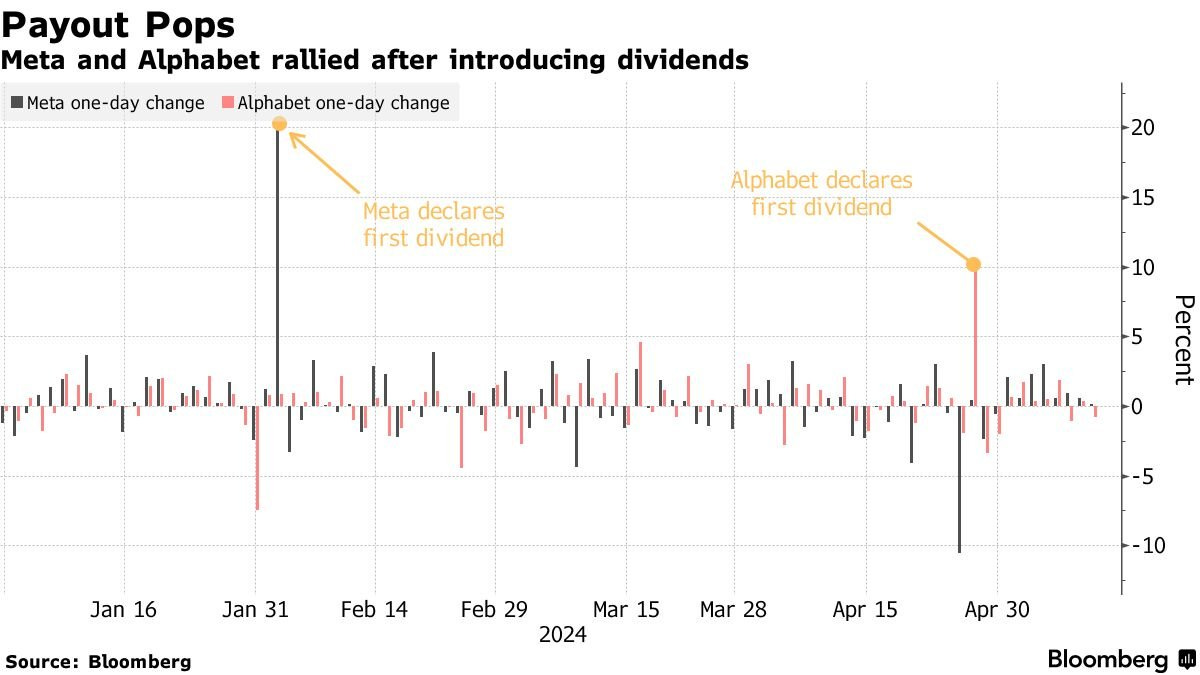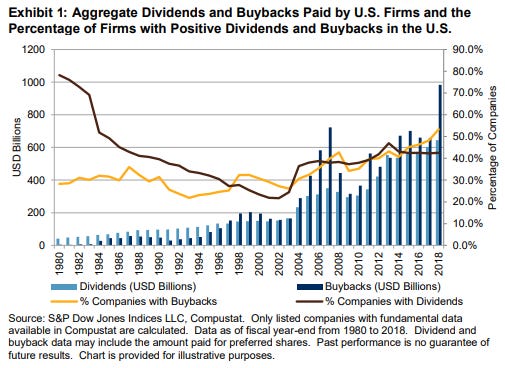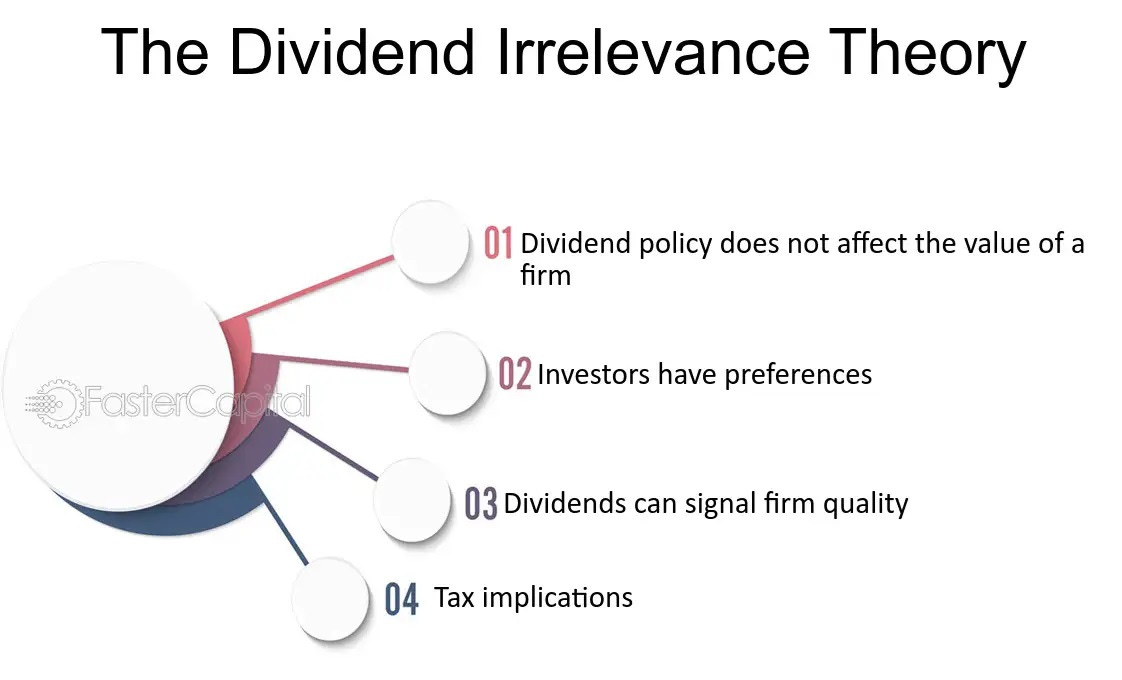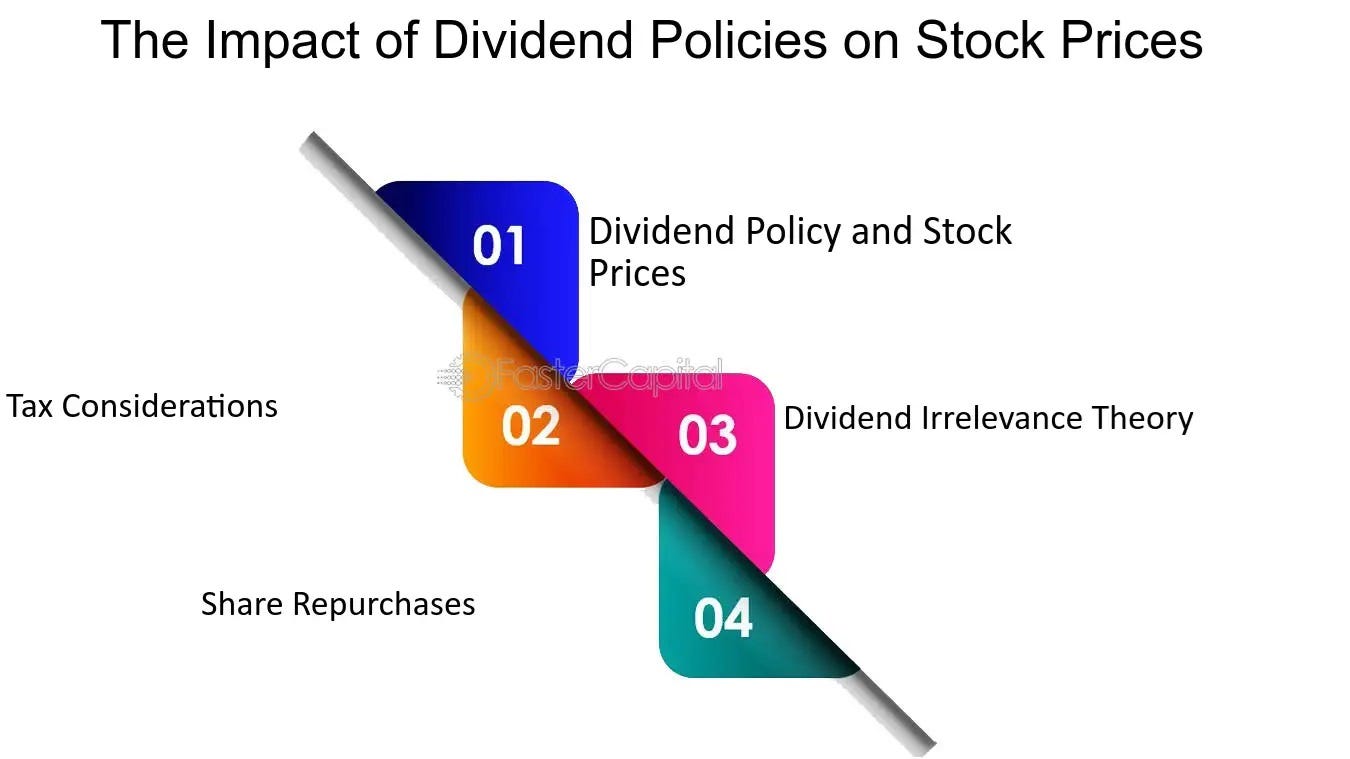Investing in Dividend Stocks?
Who believe in the irrelevance of dividends argue that offer no added benefit to investors and claim dividend payments can damage financial health of the company. Is this true? Let's try to answer
This article is the result of research by Mirko Milito, based on a video by Benjamin Felix, «The Irrelevance of Dividends».
Stock dividends are much debated among online finance forums. In the past year, leading technology companies such as Meta and Google have announced dividend payments for the first time. Some investors says they are literally irrelevant, some are addicted to them, and some avoid them like the plague. The irrelevance of dividends theory holds have no effect on a company's share price. A dividend is typically a cash payment, a percentage of value expressed in local currency, made from a company's profits to its shareholders as a reward for investing in the company. Basically, dividend is an attractive tool for investors thirsty for passive income. After all, earning money without working is everyone's dream. In reality, dividend can damage a company's ability to be competitive in the long run, as money would be better reinvested in the company to generate profits. This is a thesis.
Although there are companies probably chose to pay dividends instead of increasing profits, there are many critics of irrelevance of dividends who believe that help a company's share price to rise. Taxation is another issue penalises dividends but which varies from country to country. In Europe, for example, reinvestment of profits in harmonised accumulation ETFs is popular due to a high tax burden on financial instruments, which hurts the magic of compound interest. Some listed companies have allocated very high dividends (up to 10%, ed.) to be attractive, especially after the return of positive interest rates. Topic is very broad and debated.
Dividend irrelevance theory suggests that a company’s dividend payments don’t add value to a company’s stock price
Based on the statistics gathered so far on companies that pay dividends, it has emerged they should have little or no impact on the share price. If this were true, it would mean that dividends don’t add value to a company's share price. The ability of a company to make profits and grow its business, not the payment of dividends, determines market value of a company and drives share price. Those who believe in the irrelevance of dividends argue that offer no added benefit to investors and, in some cases, claim dividend payments can damage financial health of the company. But is this really the case? Let's dig in.

I dividendi azionari sono molto dibattuti tra i forum di finanza online. Nell’ultimo anno aziende tecnologiche leader come Meta e Google hanno annunciato per la prima volta il pagamento di dividendi. C’è chi dice che sono letteralmente irrilevanti, c’è chi ne è assuefatto, c’è chi li evita come la peste. La teoria dell'irrilevanza dei dividendi sostiene che essi non hanno alcun effetto sul prezzo delle azioni di una società. Un dividendo è tipicamente un pagamento in contanti, uno stacco percentuale di valore espresso in valuta, effettuato con gli utili di una società ai suoi azionisti come ricompensa per aver investito nell'azienda. Di base, il dividendo è uno strumento di attrazione per gli investitori assetati di rendite passive. Del resto, guadagnare senza lavorare è il sogno di tutti. In realtà il dividendo può danneggiare la capacità di un’azienda di essere competitiva nel lungo periodo, poiché il denaro sarebbe meglio reinvestito nell’azienda per generare utili. Questa è una tesi.
Sebbene vi siano aziende che probabilmente hanno scelto di pagare i dividendi invece di incrementare gli utili, vi sono molti critici dell'irrilevanza dei dividendi che ritengono che essi aiutino il prezzo delle azioni di un'azienda a salire. La questione fiscale è un altro tema che penalizza i dividendi ma che cambia da paese a paese. In Europa ad esempio il reinvestimento degli utili negli ETF armonizzati ad accumulazione vanno per la maggiore a causa di una pressione fiscale alta sugli strumenti finanziari, che danneggia la magia dell’interesse composto. Alcune aziende quotate sul mercato hanno destinato dividenti altissimi (fino al 10%, ndr) per essere appetibili, soprattutto dopo il ritorno dei tassi d’interesse positivi. Il tema è molto ampio e dibattuto.
La teoria dell'irrilevanza dei dividendi suggerisce che i pagamenti dei dividendi di una società non aggiungono valore al prezzo delle azioni della società stessa
In base alle statistiche raccolte finora sulle aziende che distribuiscono dividendi è emerso che essi dovrebbero avere un impatto minimo o nullo sul prezzo delle azioni. Se questo fosse vero, significherebbe che i dividendi non aggiungono valore al prezzo delle azioni di una società. La capacità di una società di ottenere profitti e di far crescere la propria attività, e non il pagamento dei dividendi, determina il valore stesso di mercato e guida il prezzo delle azioni. Coloro che credono nell'irrilevanza dei dividendi sostengono che non offrono alcun beneficio aggiunto agli investitori e, in alcuni casi, che il pagamento dei dividendi può danneggiare la salute finanziaria della società. Ma è proprio così? Scaviamo a fondo.
Are dividend-lovers wrong?
The crowd is very hot on the dividends. Every time someone tries to write something, detractors are quick to respond and defend their love for dividends. The problem for dividend investors in this dialogue, there is no basis for a preference for dividends. Showing dividend stocks with great past yields is not a basis, but a mental bias. Most arguments of dividend lovers focus on the ability to select individual stocks, which most people are unable to do consistently. Even in a stock picking context, there is no reason to believe that dividends growth are an indication of a good stock to own.
Dividend irrelevance theory also argues that dividends hurt a company since the money would be better reinvested in the company
When we talk about the irrelevance of dividends, don’t mean that are not an important component of total returns, but they are not relevant in determining which equities are likely to have good future returns. The cognitive bias on dividends is the biggest problem for the investor. Although people should invest the way they feel comfortable, dividend investing is not wrong, it is simply not the right way to invest for most people. In relative terms, best way to invest for the long term is to own a portfolio of ETFs (low-cost index funds, ed.). If you have not yet read our two articles we have written so far on ETFs, we recommend you do so in the 'Market Analysis' section at this link. If your goal is a reliable long-term result, there is no better approach. Investors should be indifferent between one euro in the form of a dividend, which drives the share price down by one euro received by selling some shares.
Equities are exposed to many factors including variance: unless you believe that market is broken or capital can be created from nowhere, there is no way to argue against fact that a dividend payout leads to a reduction in share value. Argument of those on the other side of the fence is that on average dividend growth stocks beat the market. But dividends are not the reason. On average, dividend growth stocks have too much exposure to value, profitability and investment factors: this is what explains differences in performance. This doesn’t make choosing individual dividend stocks a good idea.

Gli amanti dei dividendi hanno torto?
Il pubblico è molto caldo sul tema dividendi. Ogni volta che qualcuno prova a scrivere qualcosa, i detrattori sono pronti a rispondere e a difendere il proprio amore per i dividendi. Il problema per gli investitori in dividendi in questo dialogo è che non c'è alcuna base per avere una preferenza per i dividendi. Mostrare titoli a dividendo con grandi rendimenti passati non è una base, bensì un bias mentale. La maggior parte delle argomentazioni degli amanti dei dividendi si concentra sulla capacità di selezionare i singoli titoli, cosa che la maggior parte delle persone non è in grado di fare in modo coerente. Anche in un contesto di «stock picking», non c'è motivo di credere che i dividendi o la crescita dei dividendi siano un'indicazione di un buon titolo da possedere.
La teoria dell'irrilevanza dei dividendi sostiene inoltre che i dividendi danneggiano un'azienda, poiché il denaro sarebbe meglio reinvestito nell'azienda
Quando si parla dell’irrilevanza dei dividendi non si intende che non sono una componente importante del rendimento totale, ma che non sono rilevanti per determinare quali titoli azionari possano avere buoni rendimenti futuri. Il bias cognitivo sui dividendi è il più grande problema per l’investitore. Sebbene le persone dovrebbero investire nel modo in cui si sentono a proprio agio, l'investimento in dividendi non è sbagliato, semplicemente non è il modo giusto di investire per la maggior parte delle persone. In termini relativi, il modo migliore per investire nel lungo periodo è quello di possedere un portafoglio di ETF (fondi indicizzati a basso costo, ndr). Se ancora non hai letto i nostri due articoli che abbiamo scritto finora sugli ETF, ti consigliamo di farlo nella sezione ‘Market Analysis’ a questo link. Se il vostro obiettivo è un risultato affidabile a lungo termine, non esiste un approccio migliore. Gli investitori dovrebbero essere indifferenti tra un euro sotto forma di dividendo che fa scendere il prezzo dell'azione e un euro ricevuto vendendo alcune azioni.
I titoli azionari sono esposti tanti fattori tra cui la varianza: a meno che non si creda che il mercato sia irrimediabilmente rotto o che il capitale possa essere creato dal nulla, non c'è modo di opporsi al fatto che la distribuzione di un dividendo comporti una riduzione del valore delle azioni. La tesi di chi sta dall’altra parte della barricata è che in media i titoli a crescita di dividendi battono il mercato. Ma i dividendi non sono la ragione. I titoli a crescita di dividendi hanno in media un'esposizione eccessiva ai fattori di valore, redditività e investimento: è questo che spiega le differenze di performance. Questo non rende la scelta dei singoli titoli a dividendo una buona idea.
An explanatory case-study
Dividend stocks are very attractive to investors. Manipulative techniques used by sellers are the same as those used by listed companies to attract the crowd. Investors might go so far as to say that management of a dividend-paying company is positively influenced by its dividend policy, which produces better long-term results. For this idea to be true, the entire market would have to think that company is unsuccessful, while you believe the opposite. And then you would have to be right. It all comes back to pricing: price action traders and investors who support efficient market theories claim that «everything is priced in».
Jim Simons, one of the world's greatest mathematicians and manager of the world's most famous fund, Renaissance Technologies Corporation, passed away a few weeks ago but his ideas remain, along with his teachings, reminding us that «the price is always right, but that’s just not true» when referring to the value of assets. All things being equal, for future returns to be higher, current price would have to be too low, which means that market is mispricing stocks with a good dividend policy. There is no basis for believing this happens systematically throughout the stock market. Simons was a rare gem.
Theory has merits when companies take on debt to honor their dividend payments instead of paying down debt to improve their balance sheet
Let us give an explanatory example. Consider two companies, Company 1 and Company 2. Company 1 pays dividends, while Company 2 not. To simplify things, let us assume that both companies have an initial book value of EUR 10. Keep in mind that, according to valuation theory, market price is based on the book value of the company, plus value of future profits discounted at a certain rate. If two companies have the same expected future profits and market discounts them at the same rate, two companies should have the same price relative to their book value. Similarly, if two companies have the same profitability and same relative price, they should also have the same discount rate. Discount rate is the investor's expected return on a share. This relationship is valid regardless of whether the company pays dividends or not.
Two companies have an initial book value of 10 euros per share. Each of them earns EUR 2 per share. The first company pays a dividend of 1 euro, while the second pays no dividend. You own 10,000 shares of company one and receive 10,000 euros in dividends. Your shares are now worth 11 euros, 10 euros initial value plus 2 euros profit minus the dividend of 1. Your total portfolio consists of 110,000 euros in shares of company one and 10,000 euros before taxes. With Company 2, on the other hand, current value is 120,000 euros. If I needed liquidity, I could sell some of my shares. Perhaps I would create a dividend equal to yours, but I’m not obliged to do so. I could sell more or less shares as needed. In this case, I don’t allow the company's dividend policy to dictate my spending. All this applies whether the stock market is up or down. If market is down and dividend is paid, value of the company still falls by the amount of the dividend. This is necessary. This is not in dispute, unless one believes in mathematics.
Un caso-studio esplicativo
Le azioni da dividendo sono molto attraenti per gli investitori. Le tecniche manipolatorie che utilizzano i venditori sono le stesse che utilizzano le aziende quotate in borsa per attrarre la folla. Gli investitori potrebbero arrivare a dire che la gestione di una società che paga dividendi è influenzata positivamente dalla sua politica dei dividendi, che produce migliori risultati a lungo termine. Affinché quest'idea sia vera, l'intero mercato dovrebbe pensare che la società non abbia successo, mentre voi credete il contrario. E poi dovreste avere ragione. Tutto torna alla determinazione dei prezzi: i price action trader e gli investitori che sostengono teorie del mercato efficiente affermano che «tutto è prezzato».
Jim Simons, uno dei più grandi matematici e gestore del fondo più famoso al mondo, Renaissance Technologies Corporation, ci ha lasciato qualche settimana fa ma le sue idee rimangono, insieme ai suoi insegnamenti, ricordandoci che «il prezzo non è sempre giusto» riferendosi al valore degli asset. A parità di condizioni, affinché i rendimenti futuri siano più elevati, il prezzo attuale dovrebbe essere troppo basso, il che significa che il mercato sta valutando male i titoli con una buona politica dei dividendi. Non ci sono basi per credere che ciò avvenga sistematicamente in tutto il mercato azionario. Simons era una gemma rara.
La teoria è valida quando le aziende si indebitano per onorare i pagamenti dei dividendi invece di pagare il debito per migliorare il loro bilancio
Facciamo un esempio esplicativo. Consideriamo due società, Azienda 1 e Azienda 2. L'Azienda 1 paga i dividendi, mentre l'Azienda 2 non li paga. Per semplificare le cose, ipotizziamo che entrambe le società abbiano un valore contabile iniziale di 10 euro. Tenete presente che, secondo la teoria della valutazione, il prezzo di mercato si basa sul valore contabile dell'azienda, più il valore degli utili futuri attualizzati a un certo tasso di sconto. Se due società hanno gli stessi utili futuri attesi e il mercato li sconta allo stesso tasso, le due società dovrebbero avere lo stesso prezzo rispetto al loro valore contabile. Analogamente, se due società hanno la stessa redditività e lo stesso prezzo relativo, devono avere anche lo stesso tasso di sconto. Il tasso di sconto è il rendimento atteso dall'investitore su un'azione. Questa relazione è valida indipendentemente dal fatto che la società paghi o meno i dividendi.
Le due società hanno un valore contabile iniziale di 10 euro per azione. Ciascuna di esse guadagna 2 euro per azione. La prima società paga un dividendo di 1 euro, mentre la seconda non paga alcun dividendo. Possedete 10.000 azioni della società uno e ricevete 10.000 euro di dividendi. Le vostre azioni hanno ora un valore di 11 euro, 10 euro di valore iniziale più 2 di guadagno meno il dividendo di 1. Il vostro portafoglio totale è composto da 110.000 euro in azioni della società uno e 10.000 euro prima delle tasse. Con l’Azienda 2 invece, il valore attuale è di 120.000 euro. Se avessi bisogno di liquidità, potrei vendere alcune delle mie azioni. Forse creerei un dividendo uguale al vostro, ma non sono obbligato a farlo. Potrei vendere più o meno azioni a seconda delle necessità. In questo caso, non permetto alla politica dei dividendi della società di dettare le mie spese. Tutto questo vale sia che il mercato azionario sia in rialzo che in ribasso. Se il mercato è in ribasso e il dividendo viene pagato, il valore dell'azienda scende comunque dell'importo del dividendo. È necessario. Questo non è in discussione, a meno che non si creda nella matematica.
10 reasons why it is not rational to prefer dividend stocks
Receiving a dividend in a bear market is exactly like selling some stocks in a bear market. If dividends are irrelevant and if it is only exposure to common risk factors that explains the differences in returns, we would expect two funds with similar exposure to factors to have similar returns regardless of their level of focus on dividends. This implies that dividends don’t justify future returns and limiting opportunities to dividend-paying stocks reduces opportunities to about half, because half of global stocks don’t pay dividends. Less diversification means greater dispersion, which reduces the reliability of results. In summary:
For an investor, dividends are no different from the forced liquidation of a stock;
Dividends lead to higher taxes when it comes to a taxable brokerage account;
Dividends are irrelevant because an investor can create a homemade dividend at any time by selling appreciated shares;
No credible academic study shows that dividend policy is an independent predictor of higher expected returns;
Share buybacks, which result in capital gains for shareholders, are functionally equivalent and more tax-efficient for investors;
Dividend growth investing is flawed because it focuses only on a single aspect of a company's performance: its ability to consistently increase dividends. This approach ignores other important factors, such as financial health and growth potential;
Many high-growth companies don’t pay dividends. Lack of these companies reduces diversification and is likely to reduce future returns;
Relying on dividends for spending allows boards of directors of companies to determine spending policy, instead of deciding on their own;
Companies that pay high dividends often have a negative stock performance because they no longer have good ideas to reinvest and grow their businesses;
Value, profitability and momentum are independent risk factors that historically boost equity returns above market returns. Dividends are often a proxy for value and profitability, but it is more efficient to bet directly on these factors.
If you want to choose dividend stocks, if you feel more comfortable with them, that is fine. But you must realise that you are still nothing more than a stock picker. For dividend investors, there is no pedestal on which to stand.
10 motivi per cui non è razionale preferire i titoli a dividendo
Ricevere un dividendo in un quando un’azione è in calo è esattamente come vendere alcune azioni nello stesso contesto di mercato. Se i dividendi sono irrilevanti e se è solo l'esposizione ai fattori di rischio comuni a spiegare le differenze di rendimento, ci aspetteremmo che due fondi con un'esposizione simile ai fattori abbiano rendimenti simili indipendentemente dal loro livello di attenzione ai dividendi. Ciò implica che i dividendi non giustificano i rendimenti futuri e la limitazione delle opportunità ai titoli che pagano dividendi riduce le opportunità a circa la metà, perché la metà dei titoli globali non paga dividendi. Una minore diversificazione significa una maggiore dispersione che riduce l'affidabilità dei risultati. In sintesi:
Per un investitore i dividendi non sono diversi dalla liquidazione forzata di un'azione;
I dividendi comportano un aumento delle imposte quando si tratta di un conto di intermediazione imponibile;
I dividendi sono irrilevanti perché un investitore può creare un dividendo fatto in casa in qualsiasi momento vendendo azioni apprezzate;
Nessuno studio accademico credibile dimostra che la politica dei dividendi sia un fattore indipendente che predice rendimenti attesi più elevati;
I riacquisti di azioni, che comportano plusvalenze per gli azionisti, sono funzionalmente equivalenti e più efficienti dal punto di vista fiscale per gli investitori;
L'investimento in crescita dei dividendi è errato perché si concentra solo su un singolo aspetto della performance di una società: la sua capacità di aumentare i dividendi in modo costante. Questo approccio ignora altri fattori importanti, come la salute finanziaria e il potenziale di crescita;
Molte società a forte crescita non pagano dividendi. La mancanza di queste società riduce la diversificazione e probabilmente riduce i rendimenti futuri;
Affidarsi ai dividendi per le spese permette ai consigli di amministrazione delle società di determinare la politica di spesa, invece di decidere da soli;
Le società che pagano dividendi elevati spesso hanno una performance azionaria negativa perché non hanno più idee valide da reinvestire e far crescere le loro attività;
Valore, redditività e slancio sono i fattori di rischio indipendenti che storicamente aumentano i rendimenti azionari oltre il rendimento del mercato. I dividendi sono spesso una proxy del valore e della redditività, ma è più efficiente puntare direttamente su questi fattori.
Se volete scegliere i titoli a dividendo, se vi sentite più a vostro agio, va bene. Ma dovete capire che non siete ancora altro che un selezionatore di titoli. Per gli investitori in dividendi non esiste un piedistallo su cui ergersi.




Follow the Evergreen series inside Dax Trading Ideas at this link: https://www.daxtradingideas.com/t/evergreen